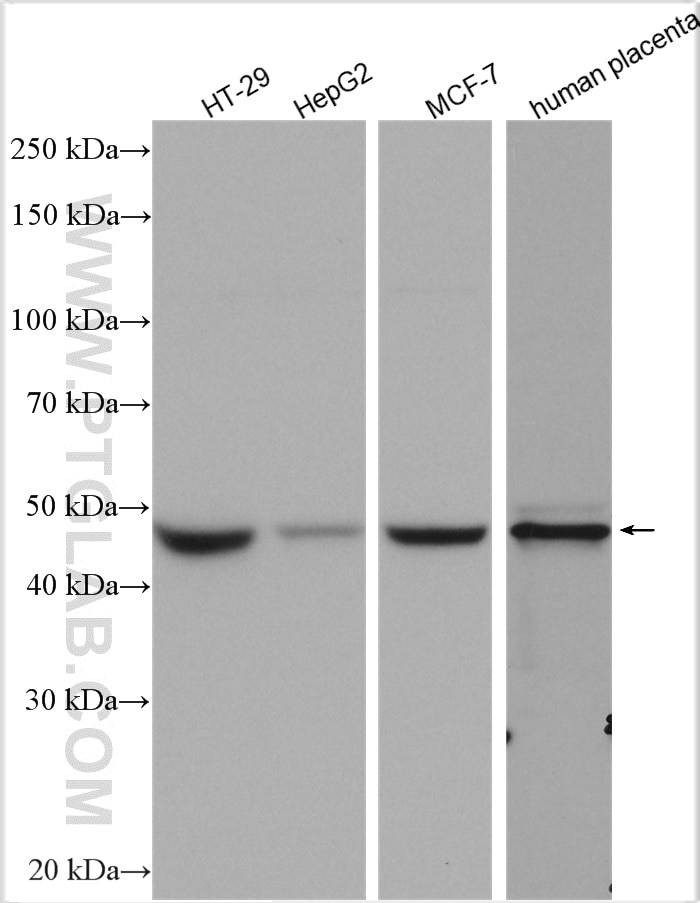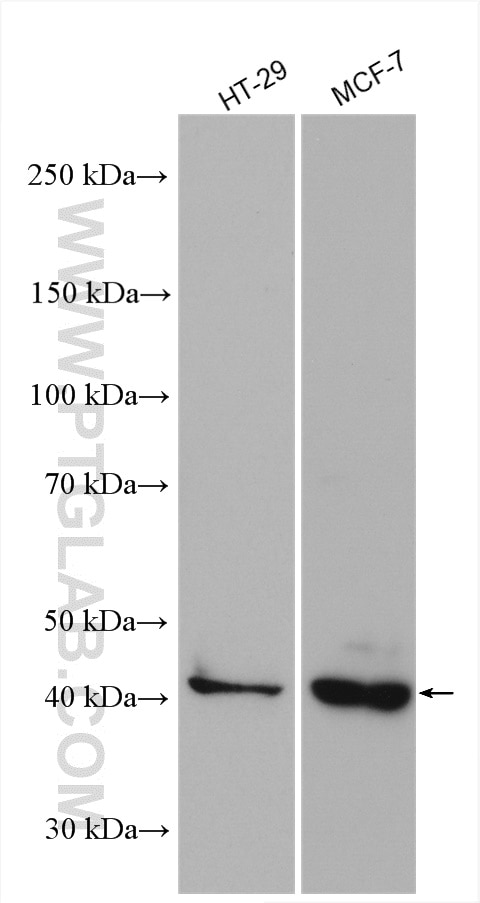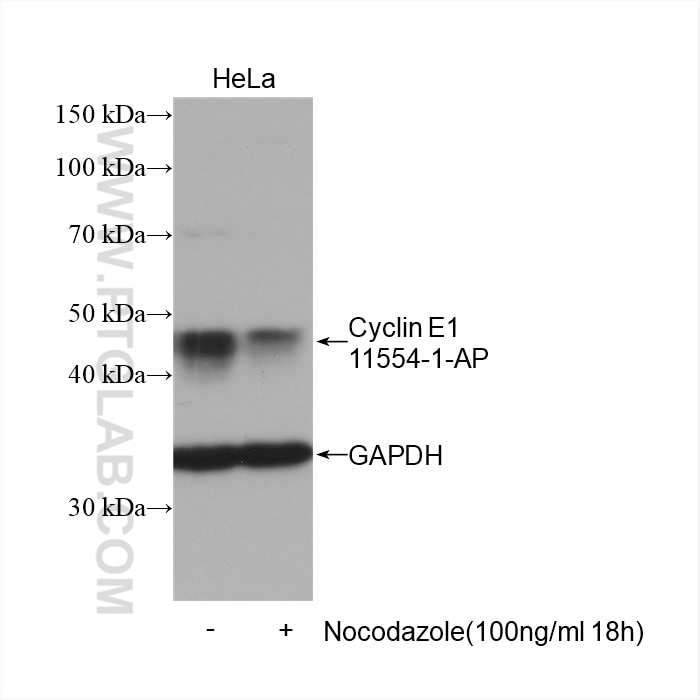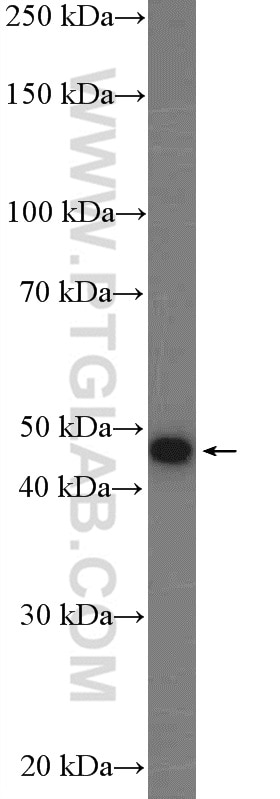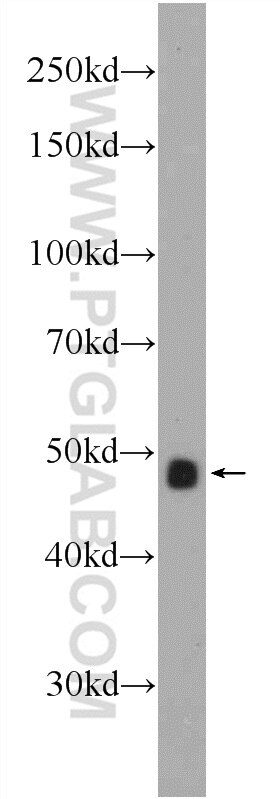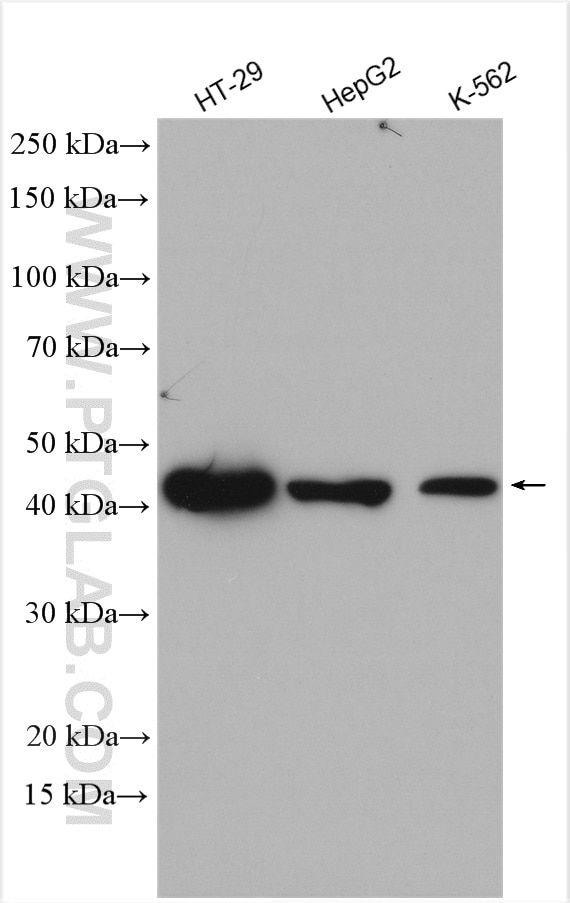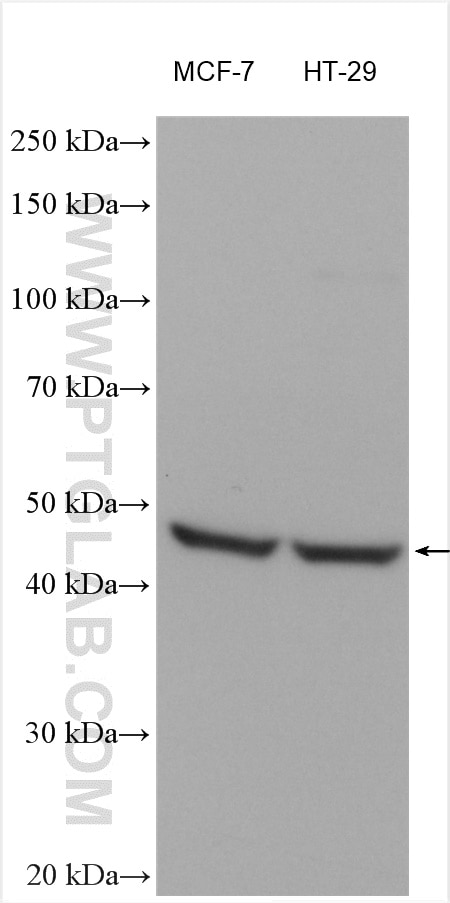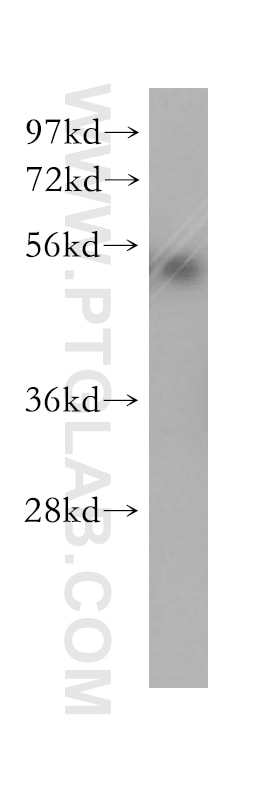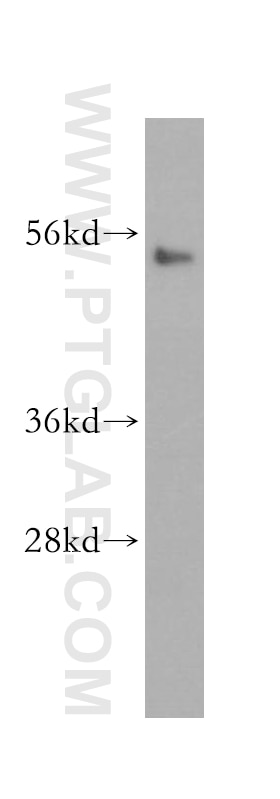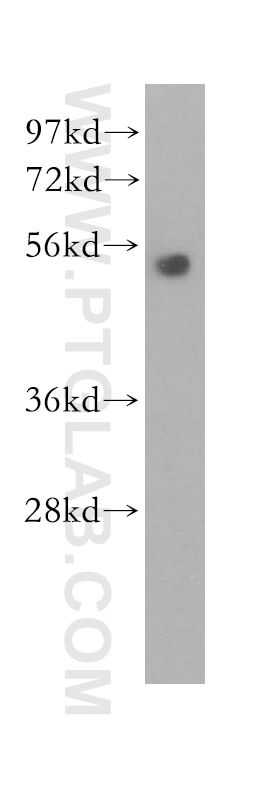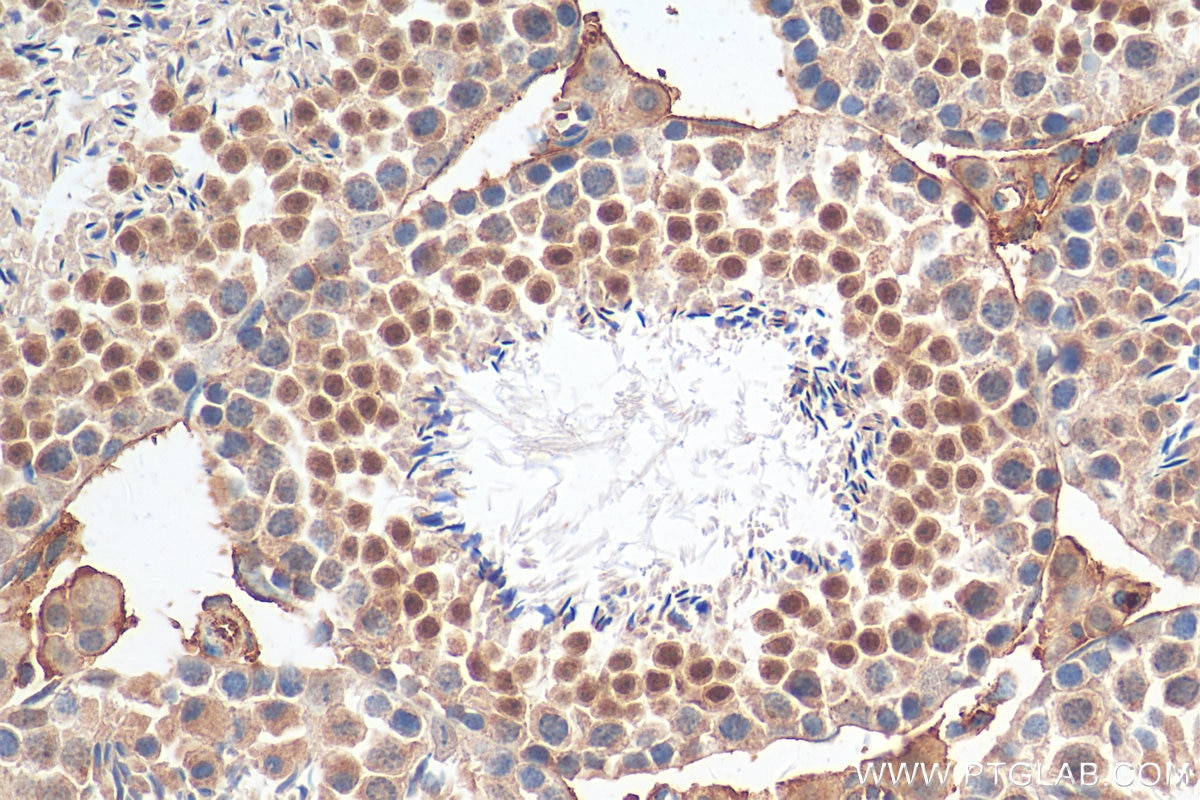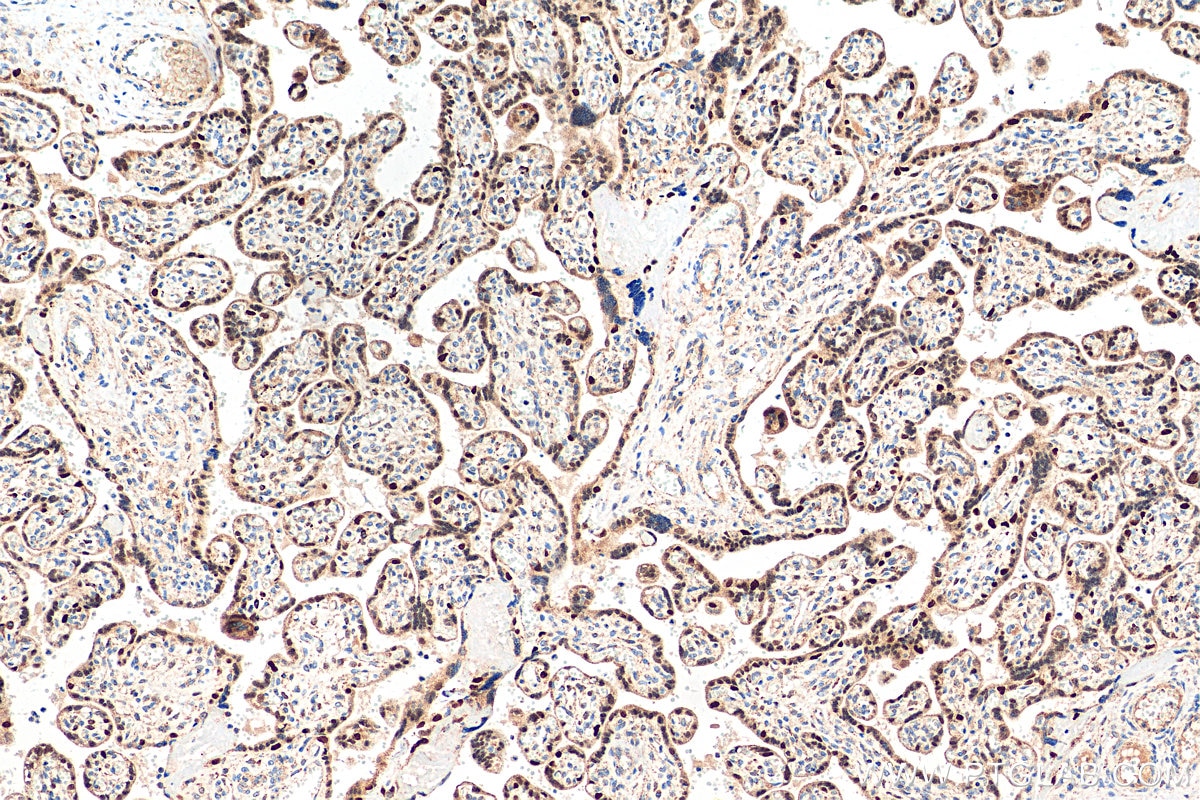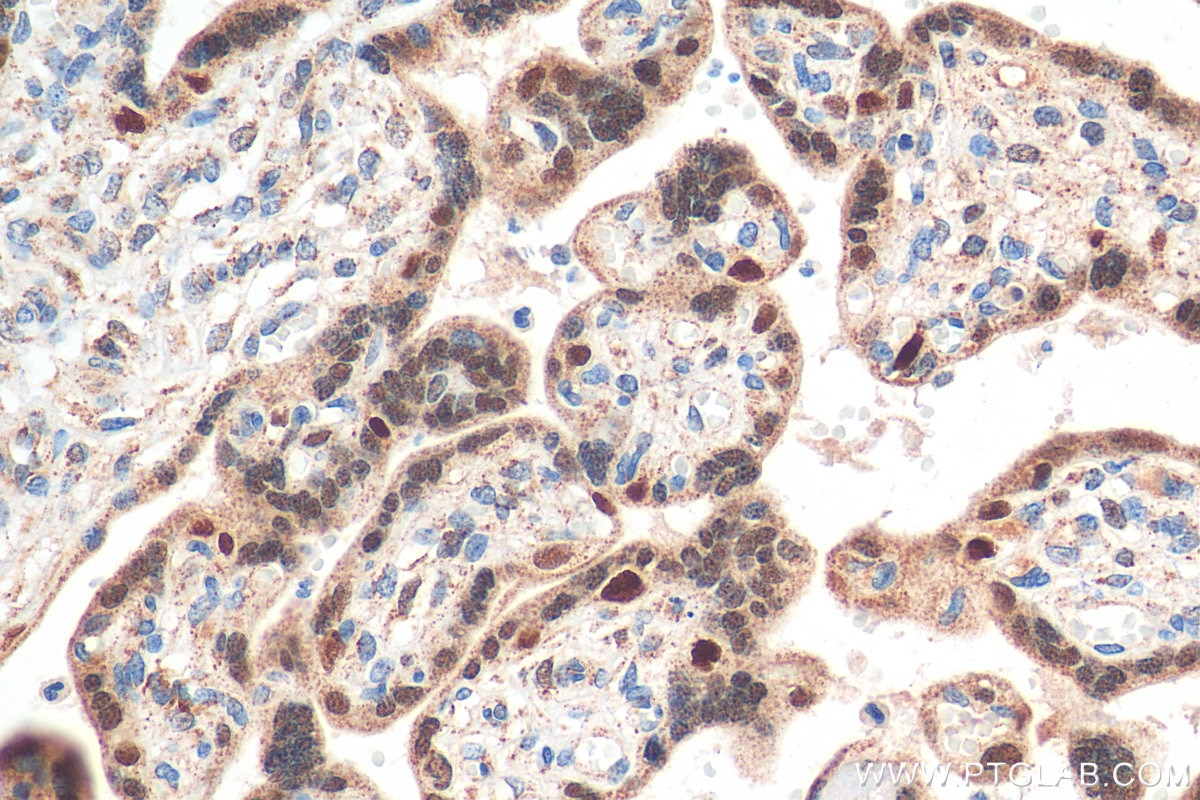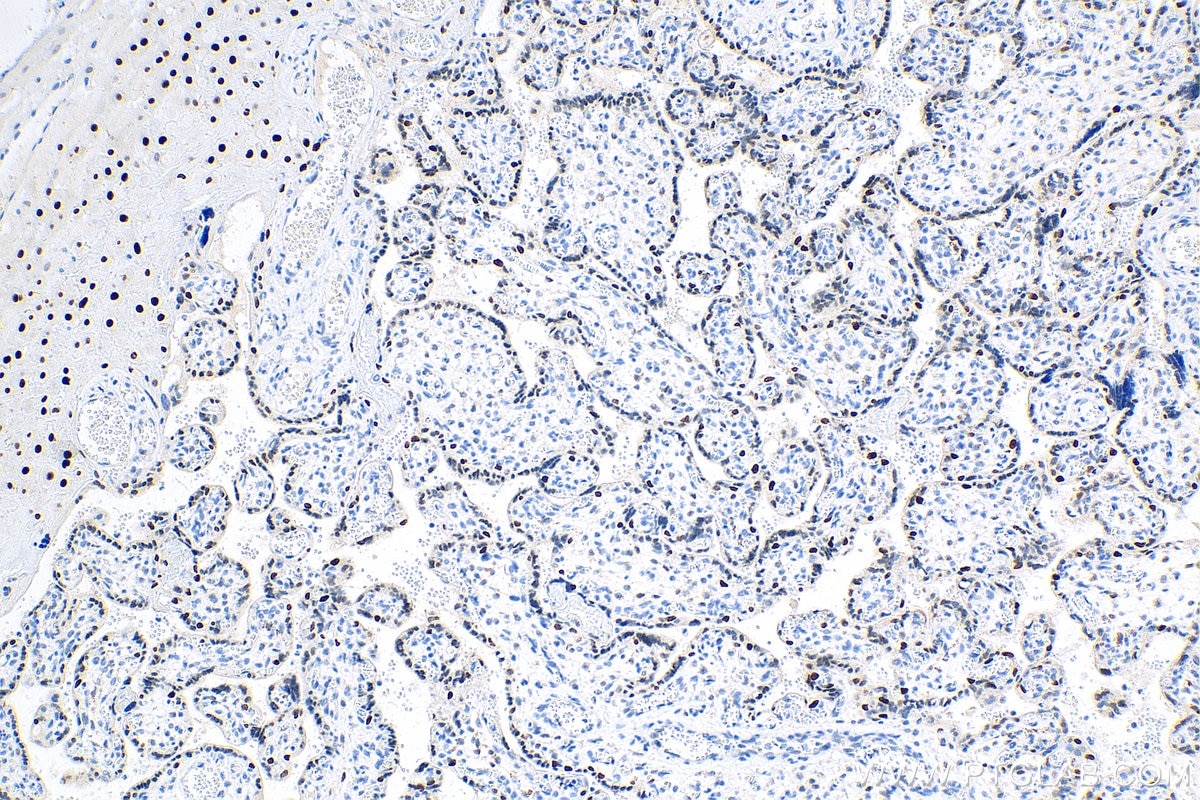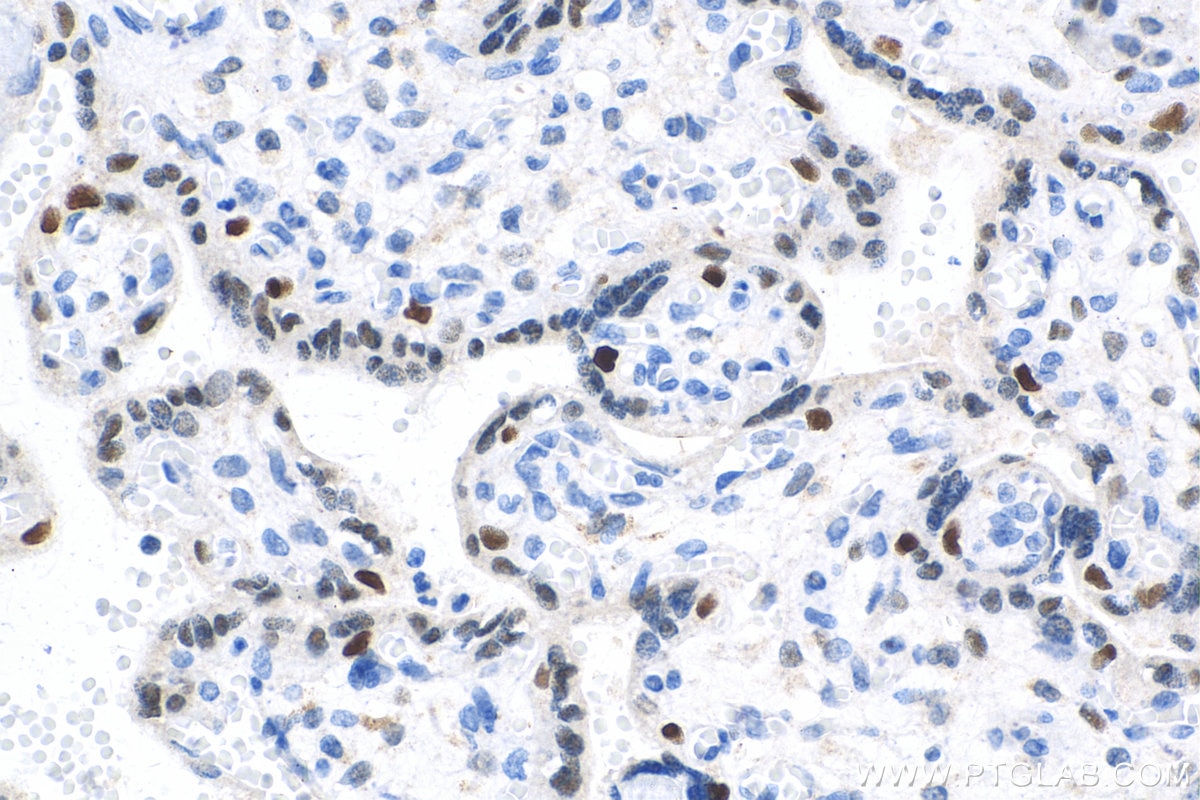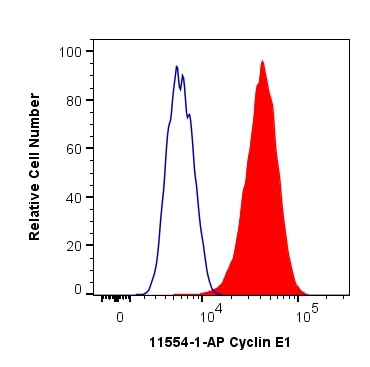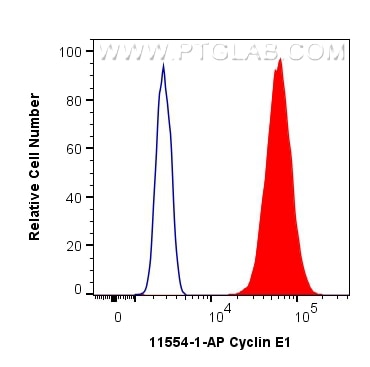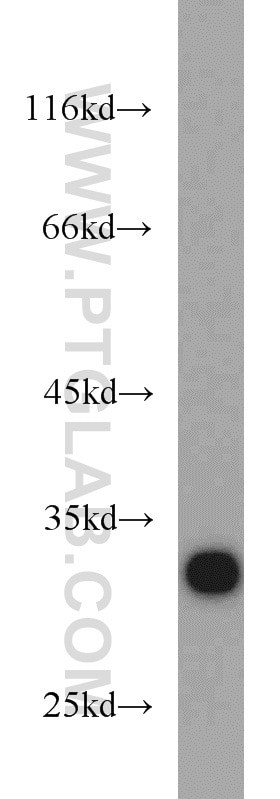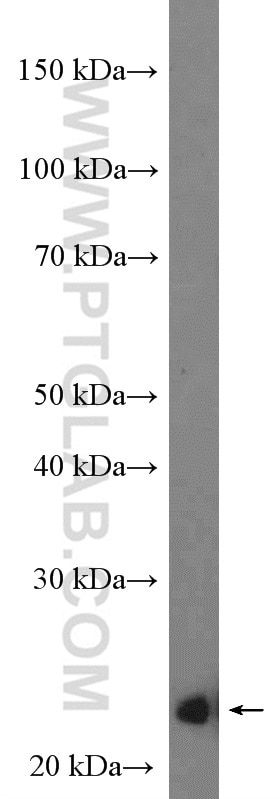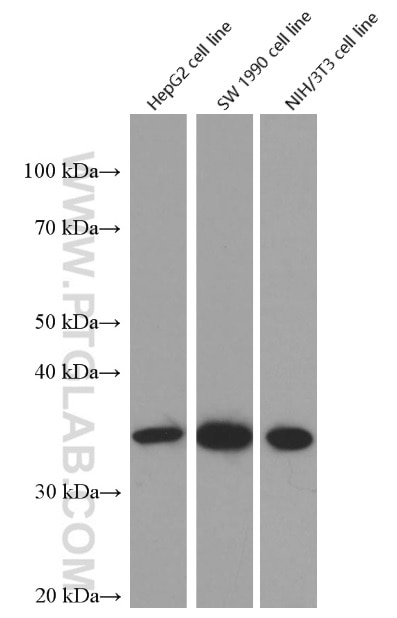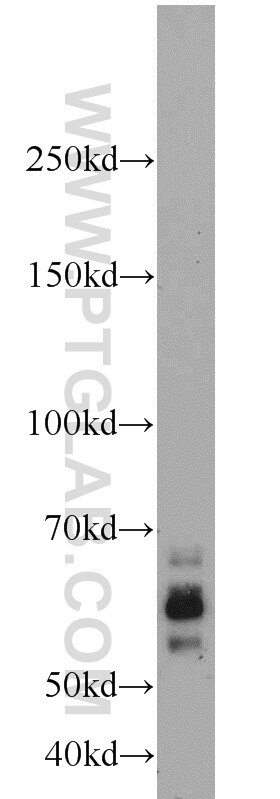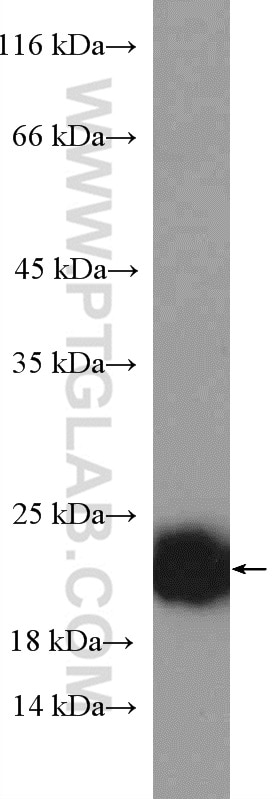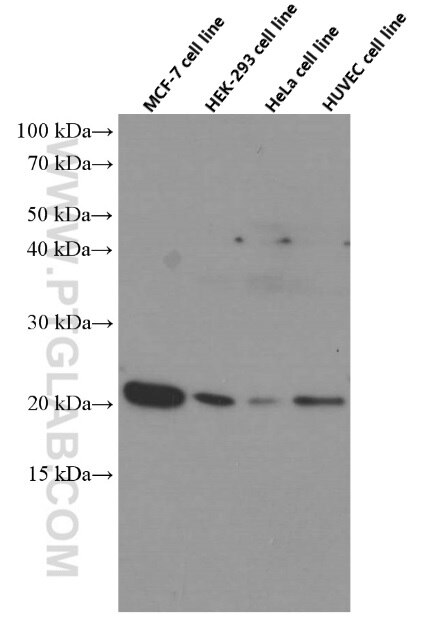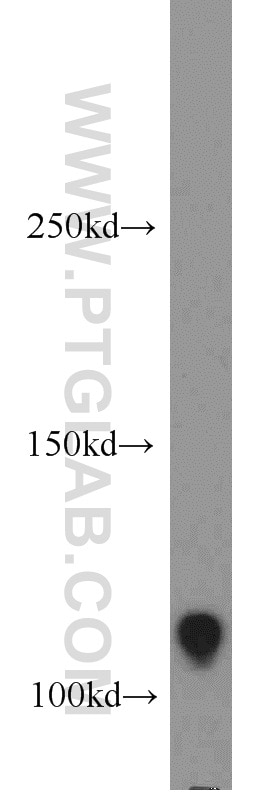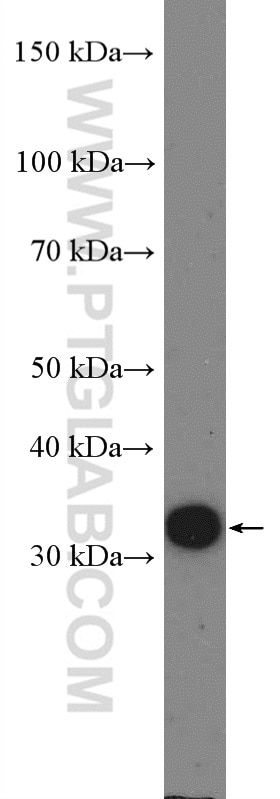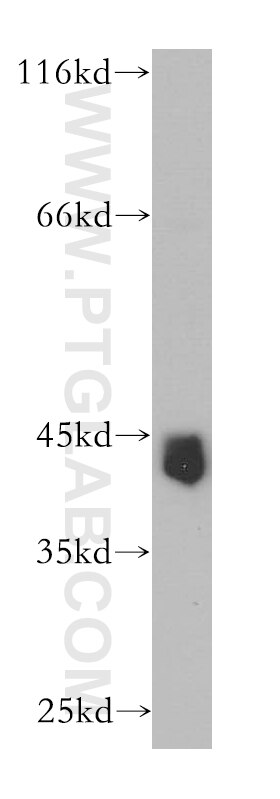- Phare
- Validé par KD/KO
Anticorps Polyclonal de lapin anti-Cyclin E1
Cyclin E1 Polyclonal Antibody for WB, IHC, FC (Intra), ELISA
Hôte / Isotype
Lapin / IgG
Réactivité testée
Humain, souris et plus (3)
Applications
WB, IHC, FC (Intra), CoIP, ELISA, IF
Conjugaison
Non conjugué
290
N° de cat : 11554-1-AP
Synonymes
Galerie de données de validation
Applications testées
| Résultats positifs en WB | cellules HT-29, cellules HeLa, cellules HepG2, cellules Jurkat, cellules K-562, cellules MCF-7, cellules NIH/3T3, tissu cardiaque de souris, tissu placentaire humain, tissu pulmonaire humain |
| Résultats positifs en IHC | tissu testiculaire de souris, tissu placentaire humain il est suggéré de démasquer l'antigène avec un tampon de TE buffer pH 9.0; (*) À défaut, 'le démasquage de l'antigène peut être 'effectué avec un tampon citrate pH 6,0. |
| Résultats positifs en FC (Intra) | cellules HeLa, cellules MCF-7 |
Dilution recommandée
| Application | Dilution |
|---|---|
| Western Blot (WB) | WB : 1:500-1:2000 |
| Immunohistochimie (IHC) | IHC : 1:400-1:1600 |
| Flow Cytometry (FC) (INTRA) | FC (INTRA) : 0.40 ug per 10^6 cells in a 100 µl suspension |
| It is recommended that this reagent should be titrated in each testing system to obtain optimal results. | |
| Sample-dependent, check data in validation data gallery | |
Applications publiées
| KD/KO | See 3 publications below |
| WB | See 279 publications below |
| IHC | See 8 publications below |
| IF | See 1 publications below |
| CoIP | See 1 publications below |
Informations sur le produit
11554-1-AP cible Cyclin E1 dans les applications de WB, IHC, FC (Intra), CoIP, ELISA, IF et montre une réactivité avec des échantillons Humain, souris
| Réactivité | Humain, souris |
| Réactivité citée | rat, Humain, poisson-zèbre, porc, souris |
| Hôte / Isotype | Lapin / IgG |
| Clonalité | Polyclonal |
| Type | Anticorps |
| Immunogène | Cyclin E1 Protéine recombinante Ag2110 |
| Nom complet | cyclin E1 |
| Masse moléculaire calculée | 410 aa, 47 kDa |
| Poids moléculaire observé | 47 kDa |
| Numéro d’acquisition GenBank | BC035498 |
| Symbole du gène | Cyclin E1 |
| Identification du gène (NCBI) | 898 |
| Conjugaison | Non conjugué |
| Forme | Liquide |
| Méthode de purification | Purification par affinité contre l'antigène |
| Tampon de stockage | PBS avec azoture de sodium à 0,02 % et glycérol à 50 % pH 7,3 |
| Conditions de stockage | Stocker à -20°C. Stable pendant un an après l'expédition. L'aliquotage n'est pas nécessaire pour le stockage à -20oC Les 20ul contiennent 0,1% de BSA. |
Informations générales
Cyclin E1 (CCNE1) is a member of the highly conserved cyclin family, whose members are characterized by a dramatic periodicity in protein abundance through the cell cycle. CCNE1, an essential cyclin activating Cdk2, regulates the G1-S phase transition of the mammalian cell division cycle. Its timing expression plays a direct role in the initiation of DNA replication , the control of histone biosynthesis, and the centrosome cycle. CCNE1 is associated with disease progression in various malignancies and is associated clinically with poor prognosis. Two bands of Cyclin E1 were expressed in U2OS and MDA-MB-231 cells (PMID:9858585, PMID: 24112607).
Protocole
| Product Specific Protocols | |
|---|---|
| WB protocol for Cyclin E1 antibody 11554-1-AP | Download protocol |
| IHC protocol for Cyclin E1 antibody 11554-1-AP | Download protocol |
| Standard Protocols | |
|---|---|
| Click here to view our Standard Protocols |
Publications
| Species | Application | Title |
|---|---|---|
Mol Cancer LncRNA TROJAN promotes proliferation and resistance to CDK4/6 inhibitor via CDK2 transcriptional activation in ER+ breast cancer. | ||
Adv Sci (Weinh) Identification of PRDX5 as A Target for The Treatment of Castration-Resistant Prostate Cancer | ||
Theranostics Polycomb repressive complex 1 modulates granulosa cell proliferation in early folliculogenesis to support female reproduction | ||
Nat Commun Identification of predictors of drug sensitivity using patient-derived models of esophageal squamous cell carcinoma. | ||
Nat Commun Iron-dependent histone 3 lysine 9 demethylation controls B cell proliferation and humoral immune responses. | ||
EBioMedicine Shuttling SLC2A4RG is regulated by 14-3-3θ to modulate cell survival via caspase-3 and caspase-6 in human glioma. |
Avis
The reviews below have been submitted by verified Proteintech customers who received an incentive forproviding their feedback.
FH Tsimafei (Verified Customer) (08-04-2024) | Antibody detect a weak band around 50kDa, however the signal is weak and non-specific strong signal is present at ~75kDa
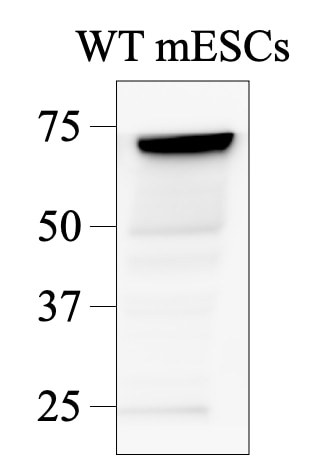 |
FH Carly (Verified Customer) (11-17-2020) | Tested using EDTA plasma on an antibody microarray
|
